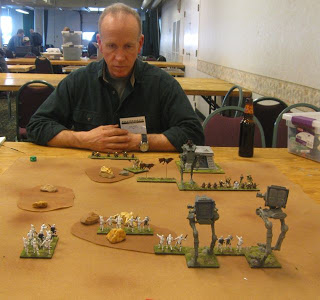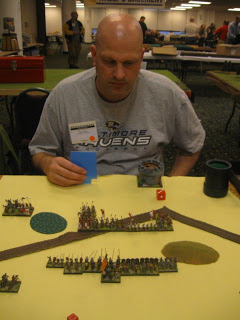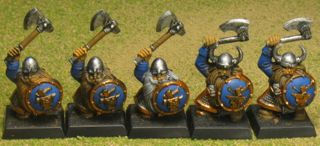In anticipation of four players for game night tonight, I set up Civilization ahead of time… guaranteeing that only three players would show up (thanks, Murphy).
Instead of Civ, which we prefer with four players, the three of us played A Game of Thrones: The Card Game for the first time. Here’s a short review of how I liked the game, without getting too far into how to play it.
A Game of Thrones is a “Living Card Game” that was once a collectible card game. That basically means that it’s still best to buy a lot of cards and build custom decks, but the additional cards are available in fixed packs instead of a random selection.
Also fairly obvious: it’s themed after George R. R. Martin’s Song of Ice and Fire series, though it was created long before the television show and uses original art instead of screen shots.
We played with three out of the four starter decks from the core set, without any modifications. Two of us have extensive experience with CCGs prior to playing, and the third has moderate experience. Because none of us had seen any of the cards before, it took us over 3 hours to figure out the rules and play a 3-player game, which is a lot longer than the recommended time frame. We acknowledge that we’re typically a slow group compared to published time limits. I’m confident that subsequent plays would be much faster, probably within the 1-2 hour time frame they suggest.
My one line summary is: I really like this game! I’m really afraid of buying more cards.
The cards and rules do a great job of implementing the feel of the politics of Westeros. House Lannister has and uses money, House Stark has a bunch of kids with dire wolves, and House Targaryen has dragons and not much else to speak of. There seemed to be a few bugs with individual characters: Eddard Stark’s ability clearly should not be to constantly avoid death. And maybe I haven’t read enough of the books yet, but some of these houses didn’t come into direct conflict as much as they did in the game. But the overall feel of the complicated political interactions between the noble houses of Westeros is implemented very well by these rules.
The multiplayer conflicts and variable player order combine to require very difficult decisions between spending resources to initiate challenges versus saving them to defend yourself; and between choosing titles first versus having the last opportunity to attack. The game definitely encourages success through good strategy, and I never felt randomness played an overwhelming role in the outcomes.
My biggest concern with the rules is analysis paralysis. It’s easy to overthink things (“So clearly, I cannot choose the wine in front of you”). There is also a lot of direct conflict that is veiled in a theme of indirect conflict, so it’s important to put on your “thematic game” and “wargame” hats before starting.
I’m a long time fan of the Middle Earth: The Wizards CCG. It has a long play time with a lot of high quality thematic content, and it comes directly from the books instead of relying on cinematic interpretations. My overall feeling of A Game Of Thrones: The Card Game is very similar. It doesn’t follow the plot of the books exactly; but it does retain the setting and characters in a lot of detail, and it encourages exploration of the world and themes created by the original literary source.
If I compare this experience to the general case of “CCG with vanilla starter decks,” only Middle Earth: The Wizards comes close to providing a comparably high quality experience. If I compare it to other CCGs that handle more than 2 players gracefully… the only other game that comes to mind is Shadowrun, and even if you could find an opponent, where would you get the cards?
To be fair, we have no experience with the additional cards available for the game, or with deck building, so this review is necessarily limited. There will certainly not be any problem with a lack of depth in the card selection, but it’s not clear whether the huge number of cards that have been released so far are well balanced or not. It’s hard to find time to build decks anymore with 2 kids around, but I’m sure we’ll get sufficient value from the core set’s $40 price tag.
If I had to come up with a complaint about this game, it would be the packaging. The core set has the worst box insert I’ve ever seen. The only way to justify the huge square box at all is to suggest that you can store all of the expansions in it along with the core game, but it begs to be stored as you’d store any CCG: in long card boxes. Unfortunately, in their attempt to make this into a board game instead of a CCG, Fantasy Flight added pawns and a board that don’t store well along with cards. The Title Reference Cards are more than adequate to convey all necessary information; I’m sure the board and pawns are only there to make board game players more comfortable.
I would definitely recommend this game for anyone looking for a CCG (or LCG) with a lot of player interaction that supports more than 2 players. If you also know and love the works of G.R.R. Martin, you can’t go wrong here.

















